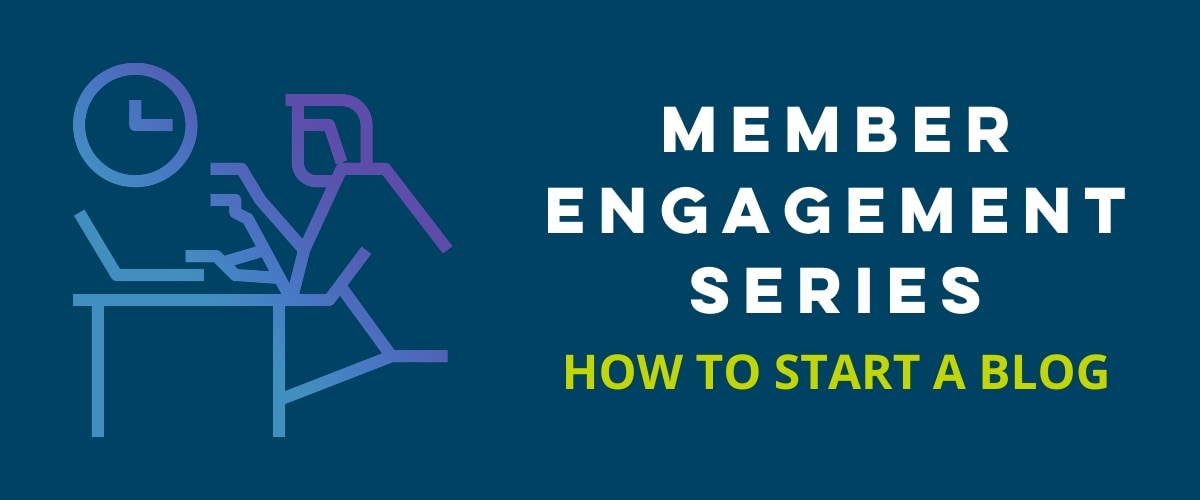Member Engagement Series: How to Start a Blog for Your Climbing Gym

Gyms across the country are missing their members, and the folks who usually climb at your facility are missing you, too. One way to keep your membership engaged in the virtual realm is a blog your audience can access through your gym’s website.
If you’re producing engaging, high-quality content—and, when you’re ready for some varsity-level blogging, using SEO (more on that later)—you’ll not only keep your own members coming back, but also draw in other readers searching for relevant content. Here’s how to get started.
Build a Strategy
What’s the purpose of your blog? (It’s ok if the initial answer is “Find a way to keep my members’ attention during the coronavirus outbreak.”)
In order to publish content that will keep your members coming back for more, you’ll need to identify just what it is your blog does. One way to do this is to do a brief analysis of your closest competitors or take a peek at the results of any recent member surveys. You’re looking for what sets your facility apart—why do members choose to climb there?
Your content strategy is an answer to that question. If members say they love the fitness equipment and classes, maybe at-home workouts and nutrition for climbers are frequent topics. Are your members in love with the routesetting at your gym? Perhaps a Q&A with your star setter to learn what inspires them.
The content strategy also addresses logistical details. When and how often do you post? Is your gym’s tone warm and casual or authoritative? Don’t worry if you don’t know the answers to these questions right away—take a guess, and then refine your content strategy as you learn more after publishing a few posts.
Stock Up on Content
Consistency is key—the best way to keep your audience engaged is to post content frequently, and on a regular schedule. To that end, you’ll want to build up a bank of content before you launch your blog. That way, you won’t end up with an unexpected gap in coverage if you have a busy week (or worse, launch a blog, post once, and lose your audience’s interest by neglecting to post again).
Start by mapping out the next few months’ worth of posts on the calendar. Add timely posts when they make sense for your specific community—a couple of weeks before your annual bouldering comp, a post by your trainer on getting comp-ready, or when the weather gets warmer, a post on cross-training for climbing.
In general, you’ll want a fair amount of “evergreen” content—posts that make sense no matter when you publish them, like a history of your gym or spotlights on staff and members. You can use this to fill in the gaps between your timely content pieces. Watch for a future post on ways to create the content your audience wants to see.
Pick Your Platforms
It’s possible that your website is already integrated with a blogging platform, in which case that’s probably the easiest way to start your blog. Regardless of whether you’re using that or a popular free platform like WordPress, take some time to familiarize yourself with the analytic tools your platform offers. This is how you’ll learn which days of the week and times of day to post, and how you’ll find out which topics and types of posts are the most popular.
Remember that hitting “Publish” isn’t the last step in the process—once those posts are up, you can use your other marketing channels to bring members to your blog. Posting an eye-catching photo related to your new post on Instagram or Facebook, along with a link to your blog and any relevant hashtags, will help draw traffic to your blog, as well.
Engage Your Readers
If possible, enable the commenting capability on your blogging platform so readers can ask questions, make suggestions, and swap relevant stories on your posts. (You can even end posts with an invitation to do so: “Do you have other questions you’d like our nutrition expert to answer? Drop them in the comments!”)
Whether you have comments enabled on your blog or just on your social channels, checking on those comments regularly (and responding to them) will help you stay engaged with your audience in a positive, collaborative way. It’s also another tool to find out what people like reading—and what they want to see more of.
Keep the Cycle Going
Remember: You’re not going to permanently mess up your analytics by posting on a Tuesday instead of a Wednesday. If something’s a flop—whether you get fewer views or the comments section isn’t what you expect—make a note of it and keep trying.
There are lots of how-to, step-by-step guides out there on starting a blog and developing a content strategy, so additional support is only a Google search away. One place to start is the free guide from HubSpot.
As you go through the process of developing your strategy and starting your blog, be aware that some amount of trial-and-error is normal. Your content strategy is a living document, so don’t be afraid to update it as you gather more information about what your audience wants.
Stay tuned for a future post in the Member Engagement Series on how to curate content your audience will love!
 About The Author
About The Author
Emma Walker is a freelance writer, editor, and an account manager with Golden, Colorado-based Bonfire Collective. Emma earned her M.S. in Outdoor and Environmental Education from Alaska Pacific University and has worked as an educator and guide at gyms, crags, and peaks around the American West.
